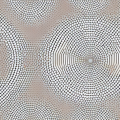A quadratic equation is a mathematical expression that can be written in the form of ax² + bx + c = 0, where a, b, and c are real numbers, and a≠0. The standard form of a quadratic equation is the most common way to express a quadratic equation in mathematics. Knowing how to work with this type of equation is essential for any math problem solving and is often used in calculus, physics, geometry, and other related areas of math.
Definition of a Quadratic Equation
A quadratic equation is a mathematical equation that contains one variable raised to the power of two, meaning that the variable is multiplied by itself. This is commonly notated as x2 or a². The general form of the quadratic equation is ax² + bx + c = 0. The function itself is known as a parabola and has two distinct roots, or points of intersection with the y-axis.
The roots of a quadratic equation can be found using the quadratic formula, which is x = [-b ± √(b² – 4ac)]/2a. This formula can be used to solve for the x-intercepts of the parabola, which are the points where the parabola crosses the x-axis. Knowing the x-intercepts can be useful for graphing the equation and understanding the behavior of the function.
The General Form of a Quadratic Equation
The general form of a quadratic equation is ax² + bx + c = 0, with “a” being the coefficient of the squared variable, “b” the coefficient of the linear variable, and “c” being the constant term. In this equation, “x” is the variable that can take on any value within a given range. By manipulating the various coefficients in the equation, one can graph the equation and determine certain properties of the equation such as its intercepts and vertex.
Examples of Standard Form of a Quadratic Equation
For example: 3x² + 7x – 5 = 0 is an example of a quadratic equation in the standard form; the coefficient of the squared variable is 3, the coefficient of the linear variable is 7, and the constant term is -5. Another example would be 6x² – 4x + 2 = 0; in this equation, the coefficient of the squared variable is 6, the coefficient of the linear variable is -4, and the constant term is 2.
Finding the Standard Form of a Quadratic Equation
In order to find the standard form of a quadratic equation, one must first identify all coefficients—the “a”, “b”, and “c”—and then rearrange the equation so that they are in order from greatest to least. This allows one to simplify the calculation required when solving more difficult equations. After rearranging, one can then solve for “x” in the equation, and thus find the standard form of the quadratic equation.
How to Use the Standard Form of a Quadratic Equation
Using the standard form of a quadratic equation is easy once you know what you’re looking for and have rearranged the equation. Once you have the “a”, “b”, and “c” coefficients in order from greatest to least, you can begin solving. For example, if you have 3x +7x -5 =0, you can subtract 3x from both sides to get 7x – 5 = 0; then divide both sides by 7 to get x – (5/7) = 0; x = 5/7. Since 3×2 + 7x – 5 = 0 is in standard form with coefficients in order from greatest to least, this process does not need to be repeated for other equations.
Advantages of Using the Standard Form of a Quadratic Equation
The standard form of a quadratic equation has a number of advantages over other forms. First, it makes solving equations much easier. By having coefficients in order from greatest to least instead of just as they appear in the equation, it is much easier to work with because you already know which numbers will yield larger answers when divided or subtracted. The standard form also simplifies graphing linear equations because it allows points to be easily plotted on an x-y graph.
Disadvantages of Using the Standard Form of a Quadratic Equation
The main disadvantage to using the standard form of a quadratic equation is that it can be difficult to get equations into standard form without practice. Since there is no single formula for rearranging equations into standard form, it can be difficult to remember which steps should be taken when trying to rearrange an equation. Also, some people find that it is easier to work with equations that are not in standard form. Some people also prefer to keep equations as they appear and do not like rearranging them.
Conclusion
Though not always necessary or preferred, using the standard form of a quadratic equation can be extremely useful for solving math problems. By rearranging equations into standard form, one can easily identify coefficients, constants, and even plot points on a graph in order to better understand how different variables interact with each other. Though it may take some practice to learn how to rearrange equations into standard form, it can be extremely useful in mathematics and other fields.





